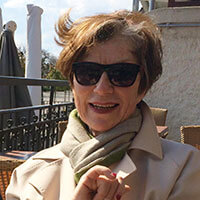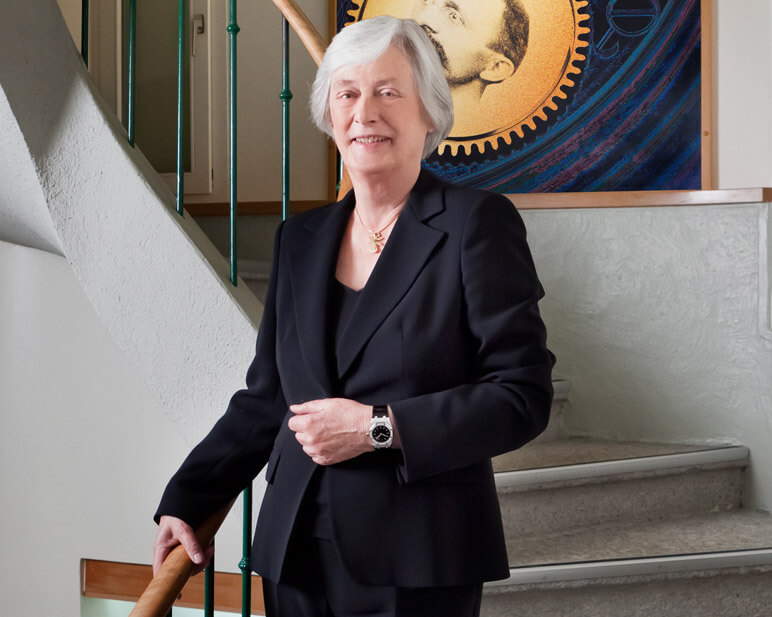The great granddaughter of Jules-Louis Audemars, who founded the company with Edward August Piguet in 1875, acknowledges that the status of Audemars Piguet as the only watchmaker still in the hands of the founding families comes at a price, but remains a privilege nevertheless. Anniversaries, such as the 40 years of Royal Oak this year, become an opportunity to revisit the founding values in order to ensure that they are still alive in the company today. “It’s not a lot of hot air,” says Jasmine Audemars when she spells out “respect, integrity, exclusivity, inspiration, refinement and passion”, values that can be traced back to her family’s Huguenot origins: “We do not care for ostentation”.
In the same spirit, Audemar Piguet’s new tag line “To break the rules, you must first master them”, launched via a global ad campaign at the beginning of this year, was chosen for its ability to synthesize the past, but also project the future. The Royal Oak, after all, broke all the rules when it became the first luxury sports watch in steel. “The roots of a company must be very deep to allow it to grow,” says Jasmine Audemars as she recalls her childhood in the Vallée de Joux. A valley where the protected forests fill the landscape and have become part of their DNA. The theme of wood, in keeping with the Royal Oak and the AP Foundation’s reforestation projects, threads itself into the conversation: “If the roots and the branches are not in harmony with each other, the brand falls apart,” she adds.
Forest conservation high on the agenda
The low profile cultivated by Audemars Piguet extends to its philanthropic ventures. “We didn’t want fireworks when the Royal Oak turned 20,” explains Jasmine Audemars. Instead, her father came up with the idea of “an enduring project”, a foundation financed by the sale of the watches that would be dedicated to the cause of worldwide forest conservation. Owners of an AP watch all contribute to the foundation. To ensure its long-term impact, the program now includes educational endeavors to raise youth awareness. But don’t go looking for swaggering ads. In keeping with its renowned discretion, the company favors results over recognition. Because the foundation’s ultimate objective is to initiate projects that become self-financed, Jasmine Audemars observes with satisfaction that just being Swiss offers “extraordinary credibility” and can often help overcome the resistances of local authorities.
Returning to her ancestors, Jasmine Audemars points out that “Fine watchmaking is not an activity without a soul”. To survive the difficult living conditions of the Vallée de Joux, “Watchmakers needed to dream. By becoming the masters of time, they found a way to be connected to the rest of the world.” More that 90 percent of the watches are exported. She then pays tribute to the Fondation de la Haute Horlogerie (FHH) and namely to its founder, Franco Cologni, who was the first to understand the cultural dimension of watchmaking: “People want to know what’s behind the watch they are purchasing.” By placing the brands above market competition, the FHH and its magazine transcend rivalries and offer what all the houses have in common: the search for perfection.
New Media and Fine Watchmaking
“New media has served us well,” observes Jasmine Audemars, because the watchmaking industry is protean and knows how to adapt, “otherwise it would no longer exist.” Distributed as a supplement to the Financial Times, 150’000 copies of the latest HH Mag, published at the end of last year, highlighted the importance of social networks for luxury brands: the keepers of time have landed squarely in the present.
Jasmine Audemars recognizes that her 23 years as a journalist, of which 12 as Chief Editor of the Journal de Genève, taught her to get to the essence of things and learn to anticipate developments. Using trees once again as metaphors, she speaks of watchmaking as “the art of growing in difficult conditions and resisting the storms,” something she had already learned in journalism.
With an eye on the future, she underlines the construction of a Centror case-making factory in Meyrin, a subsidiary of Audermars Piguet. Vertical integration has become a necessity in the watchmaking industry she points out, although technical expertise must also be accompanied by good management. She appreciates the fact that the current Audemars Piquet General Director, Philippe Merk, who has a degree in chemistry, contributes outside experience to the trade. “Other domains of activity enrich us. We mustn’t clone ourselves,” she suggests with a smile. AP currently produces around 30’000 timepieces a year and employs 1’100 peoples in Switzerland and abroad.
Asked about the former Director general, Georges-Henri Meylan, whose intention is to build a platform of independents watchmakers after recently purchasing Hautlence, Jasmine Audemars answers without a moment of hesitation that she wishes him success. What counts, she insists, is the passion that we put into making things that gain in complication and beauty. “I sometimes tell myself that we would be better off making pizzas!” There is no time to rest on our accomplishments, she concludes: “We must continually innovate, create, imagine and keep dreaming”.
An ephemeral travelling exhibition and a book to celebrate the Royal Oak
Royal Oak 40 Years – From Avant-Garde to Icon – A journey through the origins of an iconic timepiece: From the very first Royal Oak created in 1972, to the latest models presented in January at the Geneva Salon International de la Haute Horlogerie, the exhibition mounted by Audemars Piguet and spatially orchestrated by the New York MA3 Agency for the 40th anniversary of the watch legend showcases a hundred iconic pieces, alongside rare archive documents. Onlookers will discover the art of Audemar Piguets’s master watchmakers by visiting a workshop and observing a rose-engine used for the guilloché of the watch dials. They will also follow how the status of the Royal Oak was transformed from avant-garde to icon through the eyes of three contemporary artists.
Sebastien Leon Agneessens is a musician and sound installation artist who believes “that the Grand Complications of Audemars Piguet should be considered part of the world’s cultural heritage, just like a cathedral.” Hundreds of tubular sticks of different heights symbolizing the forests of the Vallée de Joux give rise to a sculpture that resembles an organ. “It’s not about luxury; it’s about perfection,” volunteers the video artist Quayola. He contributes a travel through time that focuses on the transformation of matter into works of great beauty through man’s craftsmanship. The photographer Dan Holdsworth claims “One can see in the history of Audemars Piguet the importance of this spiritual relationship to time.” His photographs of the Vallée de Joux, draped in almost mystic light, capture the essence of a time that comes to a standstill only to promise more.
The Royal Oak Book – Celebrating 40 years of an iconic timepiece: A richly illustrated 300-page book dedicated to the history of the legendary model has been put together by Martin Wehrli, Director of the Audemars Piguet Museum for the past 20 years. Translated into seven languages (English, French, Spanish, German, Italian, Russian and simplified Chinese), it can be purchased in all Audemars Piguet boutiques, at the Royal Oak 40th anniversary exhibitions, as well as a well-known bookstore in each of the touring cities: New York, Milan, Paris, Beijing, Singapore and Dubai.
















